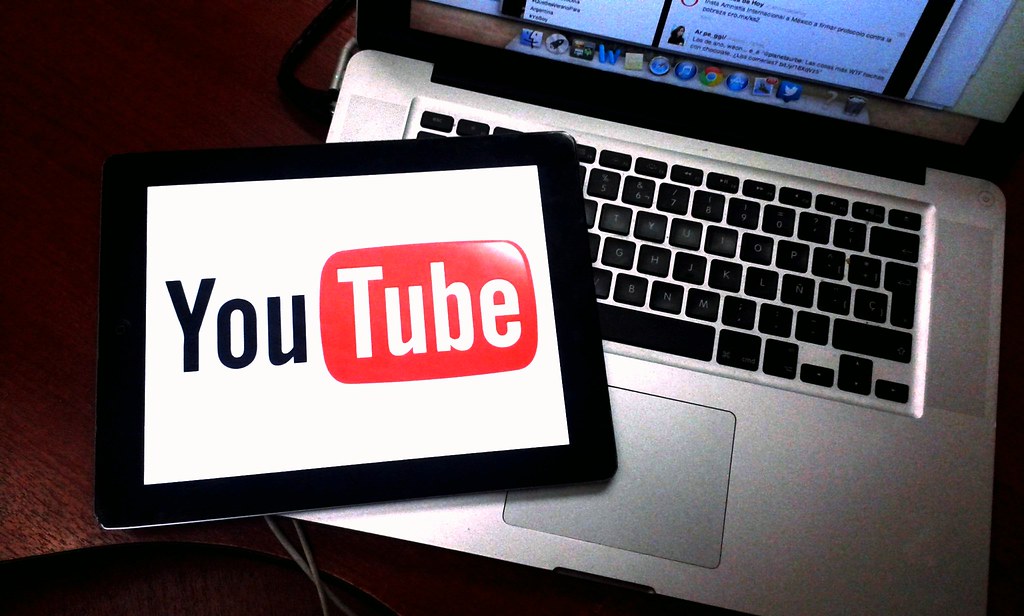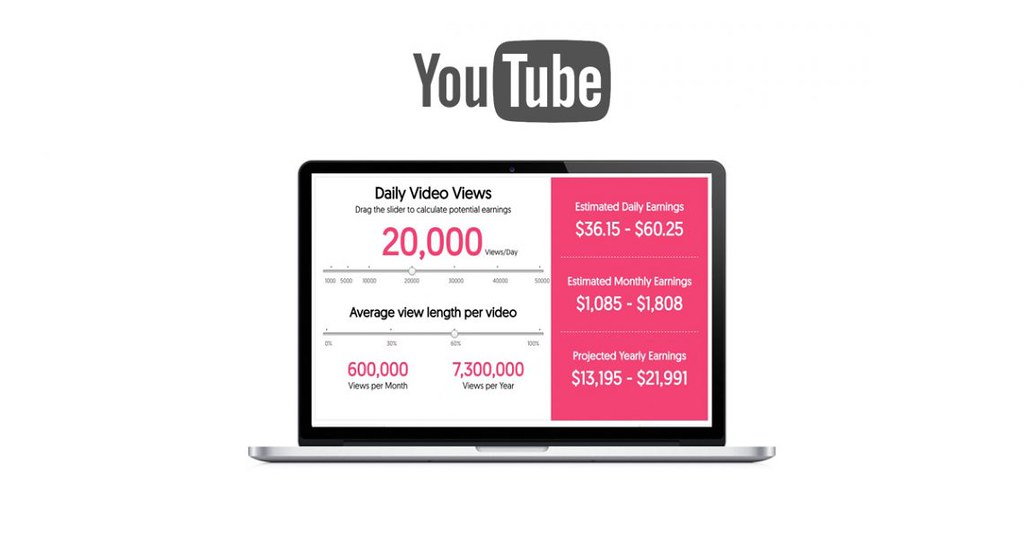

What is YouTube?
YouTube is a website created for free sharing videos. It was registered by three former employees of PayPal: Steve Chen, Chad Hurley, and Jawed Karim on February 14, 2005 (Hosch, 2021). They wanted to solve the problem of clunky video-sharing solutions at that time and were inspired by HotOrNot, an online dating service that let users uploaded their videos and pictures of themselves (Business Models Inc., n.d.). Therefore, the original idea of the website was for normal people to post and share their home videos, but now it is served two purposes: storing favorite videos, and a marketing site to promote products for many companies (Digital Unite, n.d.).
The beta site of YouTube was opened in May 2005 and attracted 30,000 visitors per day. Later, on December 15, 2005, YouTube was officially launched with two million video views on site every day. Nevertheless, the numbers still continued to grow immensely and had not stopped yet by that time. By January 2006, the views count had increased up to more than 25 million views per day, and in March 2006, the total videos uploaded to site had exceeded 20,000 videos daily (Hosch, 2021). Nowadays, 100 hours of video are uploaded to the site every minute with more than 6 billion hours of visitors watching the videos every month (GCF Global, n.d.).
Analysis of the Platform Economic
YouTube as a digital platform is originated and developed by an idea of neoclassical economic, which is assumed that individuals and companies are aware of all possibilities for exchange. Individuals give their labor and capabilities to employer and get satisfaction and wage (income) in return (Mansell & Steinmueller, 2020, p.36). The platform also considered as two or multisided market in neoclassical economic since the platform is operating as an intermediary for two separate groups which are users and advertisers. The platform allows users to produce and post the content, then the platform owner can merge the content with advertising in which the advertisers pay the platform owner. In addition, the revenue from this action may make the platform owner be able to provide the posting service to users for free (Mansell & Steinmueller, 2020, p.38).
Is YouTube considered a successful platform business?
As of now, YouTube is the second largest search engine next to Google (Algonquin College, n.d.), and there are reasons why YouTube has become so successful in the market. The first reason is a large number of videos uploaded on to the site on average of 100 hours every minute for all kinds of videos. This makes users never run out of things to watch. Another reason is that YouTube is user-generated content which means anyone can upload their videos on the site instead of videos from major TV networks and film/movie studio (GCF Global, n.d.).
Furthermore, video is a type of communications that is fast and effective to show the brand messages and able to represent the concepts that are not easily understandable via text format. The videos on YouTube are not always needed to have a huge budget in order to create one and is mobile friendly (Algonquin College, n.d.) with simple sharing method of sending a URL link (Digital Unite, n.d.).
Since the platform is packed with endless possibilities because anyone can upload their videos on to the site, many users have turned themselves to what is called ‘YouTuber’ in which they produce videos, upload it to their channels, and make profits. By being a content creator and making appealing videos on channels, it can lead to personal branding where they get paid through advertisements, previews, and sponsored videos. This influences younger generations greatly and lead to the fact that kids are the future users as well as content creators (Holland, 2016, p.56-58).
With currently more than 2 billion active users monthly and 79% of internet users said that they have YouTube account, it cannot be denied that YouTube is a video streaming platform that achieve great level of success (Business Models Inc., n.d.).

How YouTube makes money?
After Google Inc. launched their video service, Google Video in 2005, they were failed to generate high traffic and had to purchase YouTube for $1.65 billion in November 2006. They did not merge two sites together. Instead, Google Inc. continued the operation of YouTube as before to reduce the copyright-infringement lawsuits (Hosch, 2021). Then, user-generated contents flood in daily calling in many advertisements to invest on their site (Beattie, 2020).
Currently, YouTube’s main revenue comes from advertising and monthly subscription, YouTube Premium where users can pay for subscription service and get an ad-free version of YouTube. Also, any content creators who are part of the YouTube Partner Program (YPP) are able to share the revenue (YouTube, 2021).

Concerns and Risks of YouTube
There are many aspects of ethical and political issues of YouTube that can be discussed, and it mostly involved around children and teenagers. For example,
Children’s Privacy Violation:
Since there are many kinds of videos published on the site, not all contents are appropriate for children. In order to make an account, the user must be 18 years of age or 13+ with parental consent (Webwise.ie, n.d.). The U.S. government is in late stages of investigation into YouTube. The complaint is that YouTube failed to protect kids who use their site and collected their data, which violate Children’s Online Privacy Protection Act, a law published in 1998 known as COPPA that are not allowed to track users younger than the age of 13. As a consequence, YouTube was considered to move all children’s content to different app, YouTube Kid to avoid problematic material like sex or drugs (Romm & Dwoskin & Timberg, 2019).
Spreading of Fake News in Political and Societal:
The study shows that participants in both genders of younger generations represented below average communication frequency about YouTube videos in political and societal as they prefer to talk about this topic with friends instead of teachers. The result is severe because it means the critical analysis of content elude formal educational contexts in school (Zimmermann, 2020). In addition, there are many political ads on YouTube that talks about ongoing political issues, leading viewers to create own responses that sometimes can lead to a negative way (Sharif, 2012).
Influence of YouTuber on teenagers:
The study shows that teenagers tend to combining what they see on YouTube with school and copy behavior of their favorite YouTuber as they watch YouTube more than TV. Not all actions and messages are positive. Sometimes, teenagers send hate, threats, or personal information to others (Westernberg, 2016), which can lead to cyber bullying and even causing tragic outcomes.
Conclusion
YouTube is one of the most successful video streaming websites nowadays with millions of active users. The business platform derived from the idea of neoclassical economic where there are two multisided market for both users (content creators) and advertisers (the one who pay platform owner). The users give their labor and capabilities to owner and get income back in return, and the platform owners get their profit from advertisers. There are many political and ethical issues as well as positive and negative sides of YouTube that can influence children, teenagers, or even adults if we trust everything that are putting down on the internet. Since we may never know the true intention of authors or content creators on YouTube, critical thinking is a wise way to do before posting, believing, and spreading things on the internet.
References
Hosch, W. (2021). YouTube, Web Site. Retrieved from https://www.britannica.com/topic/YouTube
GCF Global. (n.d.). What is YouTube?. Retrieved from https://edu.gcfglobal.org/en/youtube/what-is-youtube/1/
Digital Unite. (n.d.). What is YouTube?. Retrieved from https://www.digitalunite.com/technology-guides/tv-video/youtube/what-youtube
Business Models Inc. (n.d.). The business model of YouTube. Retrieved from https://www.businessmodelsinc.com/business-model-youtube/
Mansell, R., & Steinmueller, W. E. (2020). Advanced introduction to platform economics, 35-54. ProQuest Ebook Central https://ebookcentral-proquest-com.ezproxy.library.sydney.edu.au
Holland, M. (2016). How YouTube Developed into a Successful Platform for User-Generated Content, 56-58. Retrieved from https://www.elon.edu/u/academics/communications/journal/wp-content/uploads/sites/153/2017/06/06_Margaret_Holland.pdf
Beattie, A. (2020). How YouTube Makes Money Off Videos (GOOG). Retrieved from https://www.investopedia.com/articles/personal-finance/053015/how-youtube-makes-money-videos.asp
YouTube. (2021). How does YouTube make money? Retrieved from https://www.youtube.com/howyoutubeworks/our-commitments/sharing-revenue/
Webwise.ie. (n.d.). Explained: What is YouTube? Retrieved from https://www.webwise.ie/parents/what-is-youtube/
Romm, T. & Dwoskin, E. & Timberg, C. (2019). YouTube under federal investigation over allegations it violates children’s privacy. Retrieved from https://www.washingtonpost.com/technology/2019/06/19/facing-federal-investigation-youtube-is-considering-broad-changes-childrens-content/
Zimmermann, D., Noll, C., Gräßer, L. et al. (2020). Influencers on YouTube: a quantitative study on young people’s use and perception of videos about political and societal topics. Curr Psychol. https://doi.org/10.1007/s12144-020-01164-7
Sharif, S. (2012). Is YouTube a Good or Bad Influence on Society? Retrieved from https://www.mic.com/articles/7869/is-youtube-a-good-or-bad-influence-on-society
Westernberg, W. (2016). The influence of YouTubers on teenagers. Retrieved from https://essay.utwente.nl/71094/1/Westenberg_MA_BMS.pdf